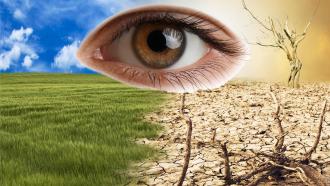Researchers from the Indian Institute of Technology and National Institute of Hydrology, Roorkee have found that the number of glaciers had gone down from 103 to 97 and a total area of 41.2 ± 10.5 km2 (18.1 ± 4.1%) lost in a short span of 35 years- between 1976 and 2011.
Findings of the research team were published in the journal Arctic, Antarctic, and Alpine Research. Smaller glaciers were observed to have lost more of their surface area than large glaciers, making them more sensitive climate change indicators.
The study warns of a long-term decline of water resources and impending flash floods due to the glacial lake outburst as warming climate may accelerate the glacial recession in the area. The researchers studied changes to glaciers in the Baspa basin, western Himalayan region and have also determined the factors affecting this change.
Indian Himalaya is home to about 9675 glaciers, most of them unexplored. Only two glaciers in the Indian Himalaya have been monitored properly and their mass balance studied- Chhota Shigri and Dokriani. Study of glaciers is important to understand their role in regional hydrology vis-a-vis ecology and how their loss will affect us.
“Overall, the glaciers are very important in the broad network of social and economic development. Likely, in the Baspa basin; the snow and glacier cover is very crucial in terms of hydropower generation and agriculture in the downstream areas”, says Dr. Riyaz Ahmad Mir, lead researcher of the study.
Thanks to their massive size, remote and harsh locations, glaciers are not easy to monitor the Baspa basin being no exception. While few studies in Baspa basin have shown that the glaciers are retreating, there was no study on its recent glacier changes and what factors affect these changes for the entire basin.
The researchers used a combination of satellite data to demarcate the changes in the glacier area, its length, and how much of it is covered with loose rock material, also called debris cover. “While using satellite data sources, it is necessary to look for the high-resolution datasets, cloud-free, and snow free images of ablation season (when snow and ice is removed by melting or evaporation) season. Besides, an extensive error analysis for all the utilized data sources must be carried out for the credibility of the results to be accepted”, points out Dr. Mir, talking about some of the data related challenges faced. In addition to satellite data, they also used data of climatic variables mainly temperature and precipitation to analyze the climatic trends.
The researchers delineated 109 glaciers having a minimum size of 0.01 km2 in the glacier inventory, a database of glaciers in the Baspa Basin, for the year 2011 and covering an area of 187.0 km2. To assess glacier changes, they selected glaciers larger than 0.10 km2 in size to reduce inaccuracies in glacier mapping. They found that the number of glaciers had gone down from 103 to 97 and a total area of 41.2 ± 10.5 km2 (18.1 ± 4.1%) was lost in the recent past between 1976 and 2011. Smaller glaciers were observed to have lost more of their surface area than large glaciers, making them more sensitive climate change indicators.
The study showed that factors such as glacier size, topography (altitude, slope and its direction, called aspect) and debris cover influence glacier changes. This is because small size, low-altitude glaciers with south to southwest aspect, debris free and relatively steep slope had lost maximum area. These factors were found to modulate and aid higher glacial loss in the basin. Meteorological variables like air temperature and precipitation were found to be playing a major role for these changes. An increase in temperature and shift of the type of precipitation from snow to rain are considered the main and primary factors responsible for the glacier recession in the Baspa Basin.
“We have observed that temperature is rising and precipitation is decreasing which is in line with the global climate data trend. Nevertheless, the solid to the liquid conversion of precipitation is very significant in the Himalaya. The glaciers mass balance, i.e. the balance between how much snow/ice is added and how much is lost during one hydrological year, is the most important parameter to monitor the glaciers health. It gives a direct response to the climatic variations if any; around the glaciers”, mentions Dr. Mir.
Since monitoring glaciers is important considering the rate at which we are losing them, the researchers suggest that certain glaciers could be prioritized for continuous and long term monitoring for better assessing climate change. The study also warns of a long-term decline of water resources and impending flash floods due to the glacial lake outburst as warming climate may accelerate the glacial recession in the area.
The Himalaya is a sight of awe for many -- the snow-capped mountains and the mighty glaciers sum it up. But, do we know what these glaciers are going through now?






